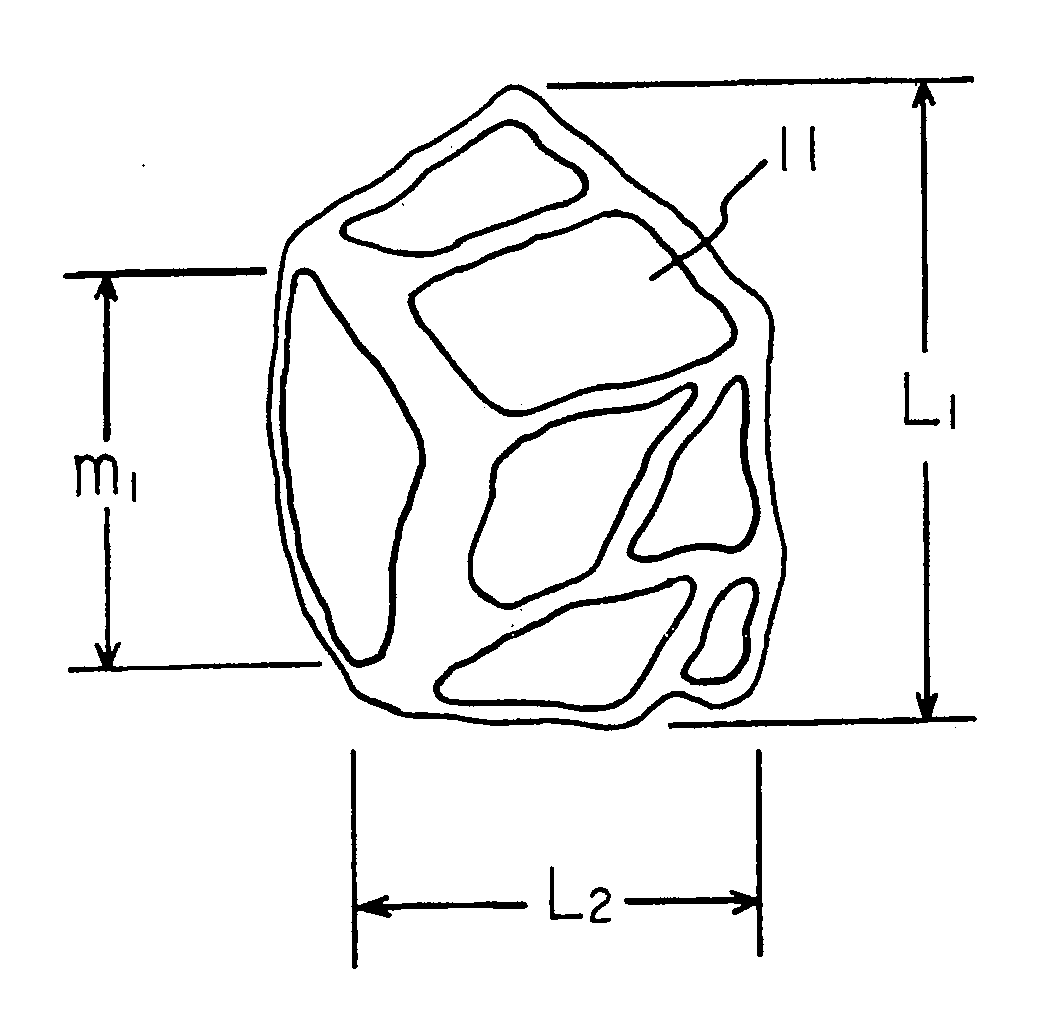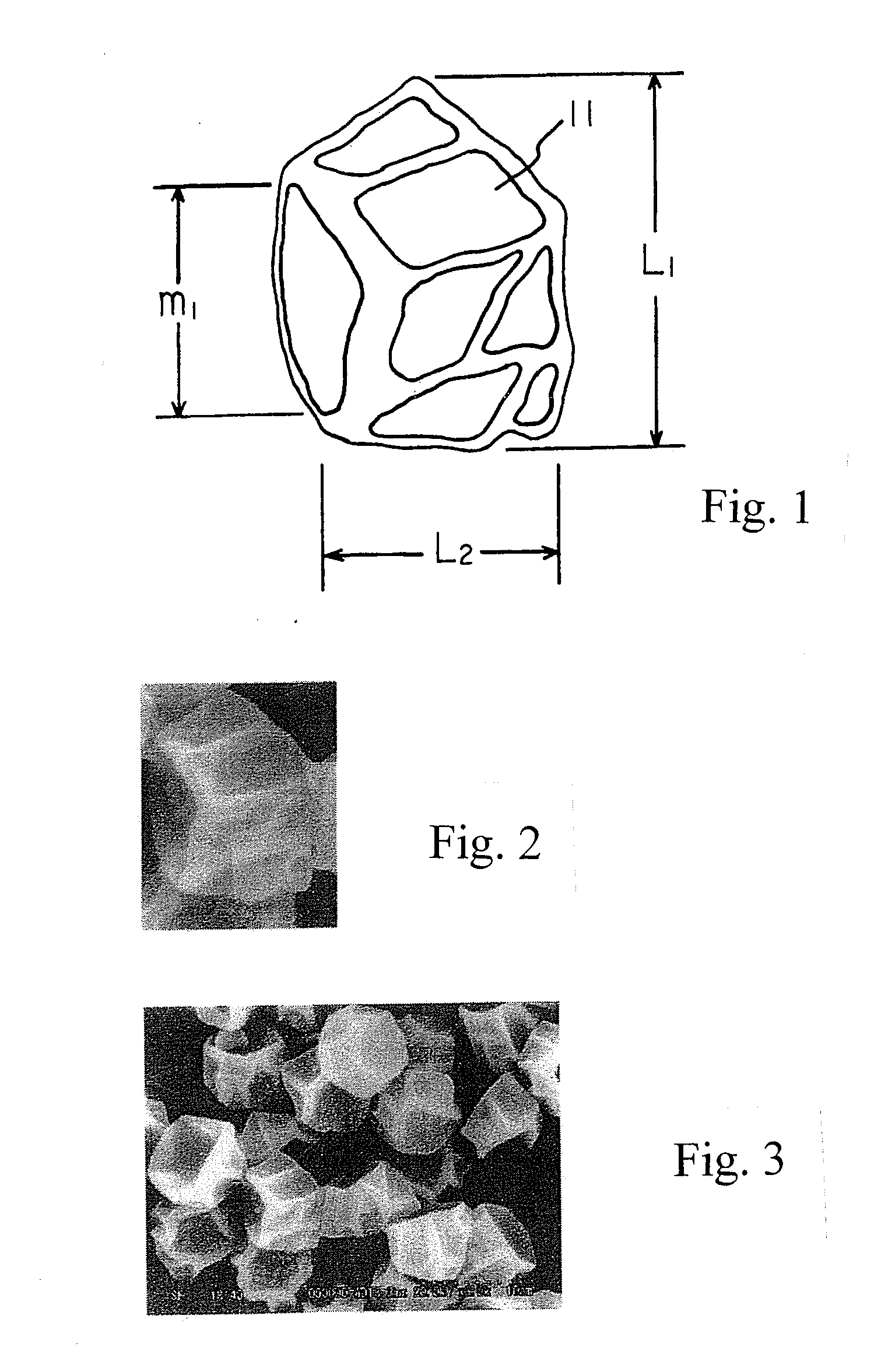Non-spherical fine particles, method of production thereof and cosmetic materials and resin compositions containing same
- Summary
- Abstract
- Description
- Claims
- Application Information
AI Technical Summary
Benefits of technology
Problems solved by technology
Method used
Image
Examples
Example
Test Example 1
Synthesis of Non-Spherical Fine Particles (P-1))
[0039]Ion exchange water 2000 g was taken into a reactor vessel and 30% aqueous solution of hydrochloric acid 0.15 g was added thereinto and dissolved. Tetraethoxy silane 270.0 g (1.30 mols) was further added to carry out hydrolysis with stirring at 15° C. for 60 minutes. An aqueous solution was separately prepared in another reactor vessel by dissolving α-(p-nonylphenyl)-ω-hydroxypolyoxy ethylene (10 oxyethylene units, hereinafter n=10) 0.73 g and 30% aqueous solution of hydrochloric acid 2.82 g in ion exchange water 350 g and cooled to 10° C., and the aforementioned hydrolysate solution adjusted to the same temperature was gradually dropped into it with stirring. Methyltrimethoxy silane 277.4 g (2.04 mols) and dimethyldimethoxy silane 44.4 g (0.37 moles) were further added and the whole was left quietly for one hour while being maintained at 13-15° C. After it was maintained at the same temperature for 4 hours, it was h...
Example
Test Examples 2-7
Syntheses of Non-Spherical Hollow Fine Particles (P-2)-(P-7))
[0043]Non-spherical fine particles (P-2)-(P-7) were synthesized as done in Test Example 1 and observations, measurements and analyses similar to those done in Test Example 1 were carried out.
Example
Comparison Example 1
Synthesis of Fine Particles (R-1)
[0044]Ion exchange water 2000 g, acetic acid 0.12 g and 10% aqueous solution of dodecylbenzene sodium sulfonate 7.1 g were taken into a reactor vessel and made into a uniform aqueous solution. Tetraethoxy silane 270.0 g (1.30 mols), methyltrimethoxy silane 277.7 g (2.04 mols) and dimethyldimethoxy silane 44.4 g (0.37 mols) were added to this aqueous solution to carry out hydrolysis at 30° C. for 30 minutes. Next, ion exchange water 700 g and 30% aqueous solution of sodium hydroxide 1.86 g were added into another reactor vessel to prepare a uniform aqueous solution. While this aqueous solution was being stirred, the aforementioned hydrolyzed liquid was gradually added to carry out a reaction at 15° C. for 5 hours and further for 5 hours at 80° C. to obtain a suspension. After this suspension was left quietly overnight, its liquid phase was removed by decantation, the white solid phase thus obtained was washed with water by a usual ...
PUM
| Property | Measurement | Unit |
|---|---|---|
| Length | aaaaa | aaaaa |
| Percent by mass | aaaaa | aaaaa |
| Percent by mole | aaaaa | aaaaa |
Abstract
Description
Claims
Application Information
 Login to view more
Login to view more - R&D Engineer
- R&D Manager
- IP Professional
- Industry Leading Data Capabilities
- Powerful AI technology
- Patent DNA Extraction
Browse by: Latest US Patents, China's latest patents, Technical Efficacy Thesaurus, Application Domain, Technology Topic.
© 2024 PatSnap. All rights reserved.Legal|Privacy policy|Modern Slavery Act Transparency Statement|Sitemap


